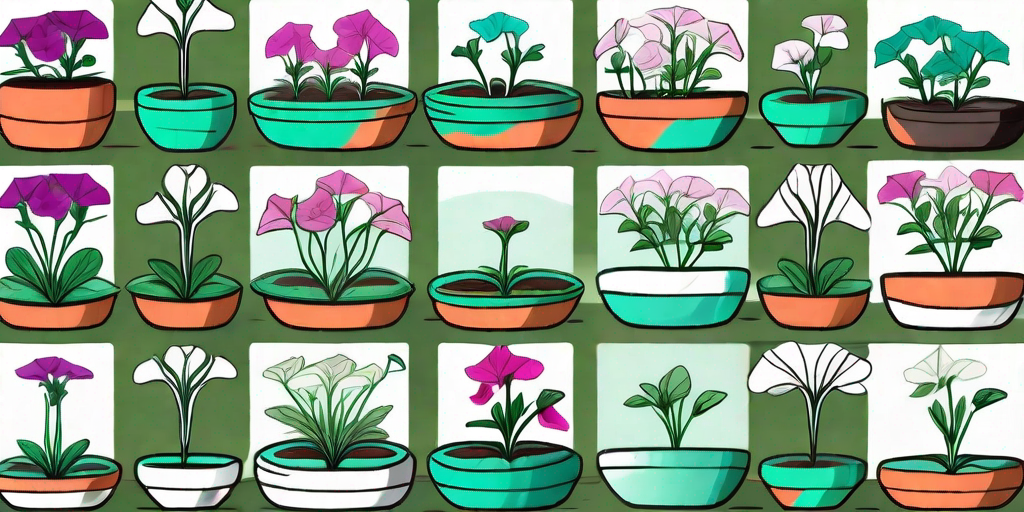
Petunias, with their vibrant colors and lush foliage, are a sight to behold. These beauties are not just a feast for the eyes but also a delight for the green thumbs. If you've been thinking about adding a dash of color to your garden, petunias are your best bet. But how do you grow and care for these vibrant flowers? Let's dive in and find out.
The Basics of Petunias
Before we delve into the nitty-gritty of petunia care, let's get to know these beauties a little better. Petunias belong to the Solanaceae family, which includes other favorites like tomatoes and potatoes. They are native to South America but have made their way into gardens around the world.
There are around 35 species of petunias, each more beautiful than the last. From grandiflora and multiflora to milliflora and spreading types, the variety is truly mind-boggling. But don't let that intimidate you. Once you get the hang of it, growing petunias is as easy as pie.
Planting Your Petunias
Choosing the Right Spot
Petunias love the sun. Choose a spot in your garden that gets at least six hours of sunlight each day. If you're growing petunias in pots, place them near a sunny window or on a sunny balcony. But remember, while petunias love the sun, they don't appreciate the heat. So, if you live in a hot climate, provide some afternoon shade to keep your petunias happy.
Preparing the Soil
Petunias aren't fussy about soil, but they do prefer it well-draining. A pH between 6.0 and 7.0 is ideal. If your soil is too acidic, add some lime to raise the pH. If it's too alkaline, add some sulfur to lower the pH. Remember, a happy petunia is a beautiful petunia.
Planting the Seeds
Plant your petunia seeds in early spring. If you're starting indoors, begin 10 to 12 weeks before the last frost date. Sow the seeds on the surface of the soil, as they need light to germinate. Keep the soil moist but not waterlogged. With a bit of patience and a lot of love, your petunias will soon sprout.
Caring for Your Petunias
Watering
Water your petunias regularly, but don't overdo it. Too much water can lead to root rot, which is a surefire way to kill your plants. As a rule of thumb, water your petunias when the top inch of soil feels dry to the touch.
Fertilizing
Petunias are heavy feeders. Feed them with a balanced fertilizer every two weeks during the growing season. This will keep your petunias blooming all summer long.
Pruning
Pruning your petunias will keep them looking their best. Deadhead spent flowers to encourage new blooms. If your petunias start to look leggy, don't be afraid to give them a good trim. They'll bounce back in no time.
Common Petunia Problems and Solutions
Like all plants, petunias can have their fair share of problems. But don't fret. With a bit of knowledge and a lot of care, you can keep your petunias healthy and happy.
One common problem is bud drop, where the buds fall off before they can bloom. This can be caused by overwatering, lack of sunlight, or too much heat. Adjust your care routine accordingly to solve this problem.
Another common issue is pests. Aphids, slugs, and caterpillars are particularly fond of petunias. If you notice any of these critters on your plants, remove them manually or use an organic pesticide.
FAQs
- Are petunias annuals or perennials?
Most petunias are grown as annuals, but they are technically warm-weather perennials. In warmer climates, they can bloom all year round.
- Do petunias need full sun?
Yes, petunias love the sun. They need at least six hours of sunlight each day to bloom their best.
- How often should I water my petunias?
Water your petunias when the top inch of soil feels dry to the touch. Avoid overwatering, as this can lead to root rot.
Conclusion
There you have it, a comprehensive guide to growing and caring for petunias. With a bit of care and a lot of love, you can fill your garden with these vibrant beauties. So, what are you waiting for? Get your hands dirty and unleash the beauty of petunias.















